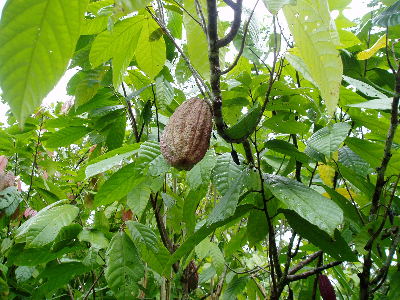 Candida krusei, Geotrichum, and Acaulospora scrobiculata,
Candida krusei, Geotrichum, and Acaulospora scrobiculata,
a trio of fungi needed for making chocolate for Valentine's day
Tom Volk's Fungus of the Month for February 2006
Please click
TomVolkFungi.net for the rest of Tom Volk's pages on fungi
by Tom Volk with photographs by Becky Curland

 Candida krusei, Geotrichum, and Acaulospora scrobiculata,
Candida krusei, Geotrichum, and Acaulospora scrobiculata,  Candida krusei, Geotrichum, and Acaulospora scrobiculata,
Candida krusei, Geotrichum, and Acaulospora scrobiculata, 